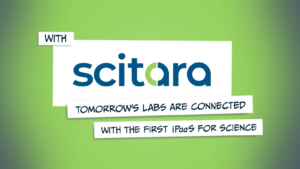Lots can go wrong in a lab.
Poorly calibrated instruments, environmental variables and procedural errors can all wreak havoc on the scientific process—undermining results and invalidating research. And no matter how much these x-factors are ever mitigated or controlled, one wild card will always remain: human beings.
Because wherever human beings go, human error follows.
And in a lab setting, where scientists often perform highly repetitive tasks, those errors can be frequent—and have far-reaching effects.
What can go wrong?
Companies develop policies, processes and procedures. Regulatory agencies offer guidance and enforcement. Scientists receive significant training and education.
But despite these efforts, human error in the lab is inevitable, and can manifest itself in a variety of ways.
Waste of human capital
The more scientists are burdened with manual, repetitive tasks, the more likely human error is to occur. This increase means scientists are spending more time analyzing and correcting errors and less time using their skills, education and experience to advance scientific discovery.
Inaccurate testing
Reduced accuracy or precision directly impact the quality of test results, which may directly impact everything from go-to-market timelines to patient safety.
Unreliable data
Manual transcription and data entry open the door for a whole host of human errors, any of which can compromise data integrity.
Failed tests
Contamination and incorrect handling can lead to test failures that must then be analyzed and remedied, taking up valuable time and resources.
Increased Cost
The Data Warehouse Institute estimates that U.S. businesses lose $600 billion every year due to bad, inaccurate or missing data.
While human error is a threat to any industry, its effects can be particularly devasting for the life sciences, where time and resources are often in short supply—and accurate, reliable data is critical to the development of life-saving therapies.
Meet the modern labTM
Scitara’s breakthrough iPaaS for science, Scitara DLX, lets you tap into the power of automation to dramatically reduce human error—and free scientists to focus their time on complex tasks that drive discovery.
By digitizing and connecting processes and workflows across the entire lab enterprise, it can minimize human intervention and significantly improve result quality.
To get a more in-depth rundown of DLX, check out our recent white paper on the subject here.
Download our new iPaaS for Science white paper.
About Scitara
Scitara is a global provider of cloud-based, industry-specific platform and solutions for the life sciences industry. Based in Massachusetts, the Scitara leadership brings decades of experience in solving digital challenges for the scientific laboratory: Meet the Modern Lab™. For more information, please visit www.scitara.com.
